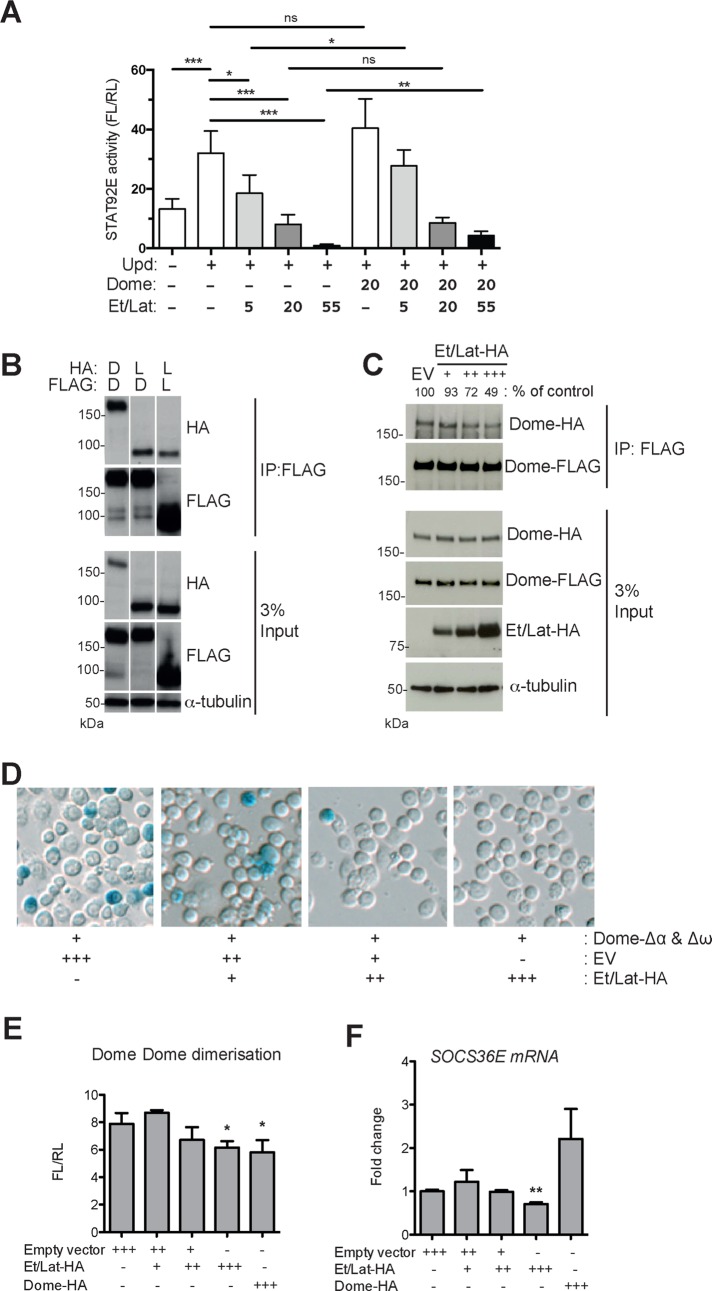FIGURE 1:
Et/Lat can disrupt formation of Dome homodimers. (A) STAT92E transcriptional reporter activity assay. Pathway activity increases after the cotransfection of Upd ligand. Cotransfection of increasing quantities of Et/Lat blocks signaling capability in a dose-dependent manner. Expression of additional Dome does not significantly alter signaling (column 6) in the absence of Et/Lat but is sufficient to significantly increase signaling inhibited by Et/Lat coexpression (compare column 3 to column 7 and column 5 to column 9). Numbers indicate relative levels of Dome- and Et/Lat-expressing plasmids transfected. (B) Coimmunoprecipitation assays using FLAG-tagged Dome (D) or Et/Lat (L) to pull down HA-tagged Dome or Et/Lat indicate that both Dome and Et/Lat can form both homodimers and heterodimers. Constructs transfected are indicated. α-Tubulin was used as a loading control. (C) Coimmunoprecipitation assays using Dome-FLAG to pull down Dome-HA from cells. Quantification of this blot is shown as percentage of control levels. Increasing the level of Et/Lat cotransfected into cells reduces the amount of Dome-HA that can be coimmunoprecipitated. EV, empty vector. (D) Cells transfected with the Dome-Δα and Dome-Δω dimerization assay and stained with X-gal (blue) to visualize bimolecular complementation. Owing to transient transfection, not every cell expresses both constructs. Increasing amounts of Et/Lat retransfected into previously transfected cells progressively block Dome homodimerization. (E) Dome homodimerization as described in D but quantified using β-Glo reagent to measure β-galactosidase activity levels. (F) Quantitative PCR of the JAK/STAT pathway target gene socs36E. mRNA levels are reduced after increased expression of Et/Lat but not after increased Dome. The analysis used unpaired t tests with Welch’s correction. *p < 0.05, **p < 0.01, and ***p < 0.001. ns, not significant.

